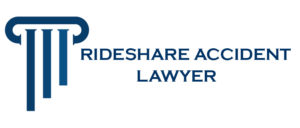
Wilmington’s economy has opened again as filled restaurants, arts events, and bars testify to their community’s requirement for reconnecting after a long lockdown.
For Wilmington-based Lyft and Uber’s ride-share service users, commuting and/or traveling from their home to social outings and back are becoming pricier than they once were. Many Wilmington users have stated that ride-share service providers see longer waiting periods and higher rates.
One of them, a man named Jamey Stone, is a Downtown Wilmington tour guide. Stone said that it cost him only around $11 to go from Midtown Wilmington to Downtown Wilmington in the evening of a recent Friday.
Anyhow, he had to spend $29 more to return some hours later on the same day. Back then, he used more than 60 minutes downtown to clear out his history and reload. Cars were unavailable in that place for Lyft, and there were hardly any Uber cars, so Stone kept hoping for rates to reduce for the available service. So, Stones ended up spending $40 on it.
Before the epidemic, Stones said that he seldom spent over $12 to $14 on a ride, one way or the other, even on peak weekend times.
Artist James Sardone stated that it was difficult to have a ride between Downtown and Midtown Wilmington on a Saturday night of late. When it became available, the musician had to spend $32 on it.
Chaundra Harris stated that the price for the trip from Midtown Wilmington to West 20th Street jumped from $5 to $20 on a Thursday evening of late. On top of that, there was a waiting period of over 30 minutes, said Harris.
Scott Relan summarized the general impression thus: When ride-sharing services first arrived in town, it felt great to reach everywhere. Of late, Wilmington inhabitants have not been capable of even getting a ride, especially an inexpensive one.
Over the recent weeks, many media outlets have also reported a demand increase and a driver deficit for both Uber and Lyft. Earlier this June, Business Insider reported a 40% increase in fares as compared to pre-epidemic levels.
According to Uber’s April 2021 press release, several people stopped driving last year since they could not bank on having enough rides to make the job worthwhile. This year, there is a greater number of riders seeking trips as compared to the driver count available to offer them the service.
Uber also stated that it would launch a driver stimulus of $250 million with increased incentives and assurances for two objectives.
- To make existing workers return to it
- To confirm that first-time Uber drivers perform well
A Lyft spokesperson stated that it is having a considerable increase in the demand for its rides as people start to move again when vaccines are available. Lyft is making some moves to meet that demand, which include incentivizing its workers who are earning more and busier as compared to the pre-epidemic period.
The demand for the services is going up, whereas users have to make some adjustments. Some of them have had better luck with regards to taxi service use. Over the last few years, ride-share providers have negatively affected taxi services’ business.
When Carol Pendergrast flew into the port city at night on an April 2021 Wednesday, Uber informed her of the unavailability of cars. To make things worse for Pendergrast, every cab at her airport was also booked. So, she ended up contacting Pyramid Taxi LLC for its service and getting a ride through it.

Not all who utilize ride-share solutions have difficult experiences to share with us. Wilmington’s Uber user Caroline Cropp stated that she has noticed longer waiting periods and a bit higher rates than how they were before this epidemic. On the upside, she found all her drivers to be warm, friendly and accommodating.
It is uncertain whether these travel services regain soon with lower rates and shorter wait times for users.
Through a recent email to Wilmington’s Star-News, Lyft stated that it is focusing on raising the driver count to aid in meeting the grown rider demand. Drivers who undergo Lyft’s onboarding process, including background checks, described as ‘driver leads’, increased by over 25% in May from late February.
Uber’s driver count is around 20% less than 2020, but it has started building on gains involved in including more drivers.



